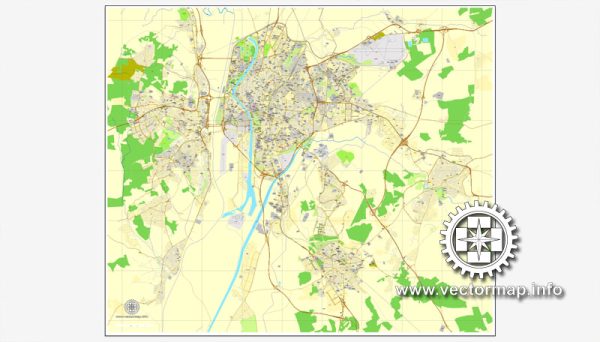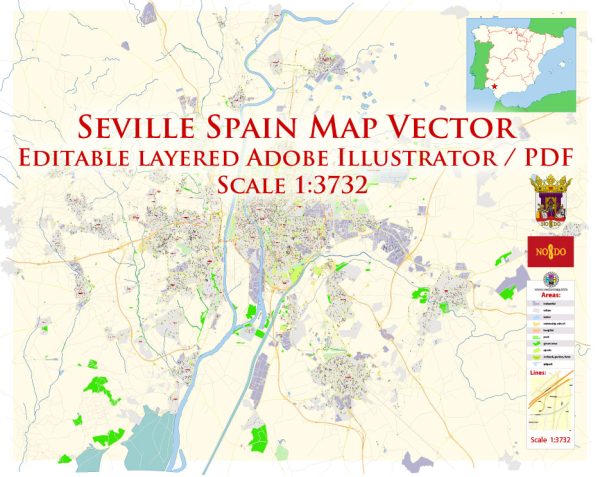Seville, located in the southern part of Spain, has a rich history of urban development that spans centuries. The city’s strategic location on the Guadalquivir River has contributed to its importance as a center of trade, culture, and politics. Here is an overview of the history of urban development in Seville:
- Roman Period (2nd century BC – 5th century AD): Seville, known as Hispalis during Roman times, was an important Roman city. The Romans built bridges, roads, and other infrastructure that facilitated trade and communication. The city prospered as a regional center.
- Visigothic Period (5th century – 711 AD): After the fall of the Roman Empire, Seville came under Visigothic rule. The city’s urban development during this period was influenced by Visigothic architectural styles, and some remnants of Visigothic structures can still be found.
- Islamic Period (711 – 1248 AD): The most significant period in Seville’s history was during Islamic rule. The Moors, led by the Umayyad Caliphate, transformed the city into a vibrant cultural and economic hub. The Alcazar of Seville, a palace complex, and the Giralda, originally a minaret, were constructed during this time. The city’s layout and architecture were influenced by Islamic urban planning principles, including intricate tilework, courtyards, and gardens.
- Reconquista and Christian Rule (1248 – 1492 AD): Seville was reconquered by Christian forces in 1248 under Ferdinand III of Castile. The city underwent a period of Christianization, with the construction of churches and the Gothic Cathedral of Saint Mary of the See, which replaced the former mosque. The Alcazar continued to be used by Christian monarchs, and modifications were made to suit their tastes.
- Golden Age and the Spanish Empire (16th – 17th centuries): Seville experienced a period of economic prosperity during the Age of Exploration. The city became a major port for trade with the Americas, and wealth flowed into Seville. The Golden Tower (Torre del Oro) was constructed as part of the city’s defensive structures during this time.
- Baroque and 18th Century: The city continued to grow during the Baroque period, with the construction of numerous churches and palaces. The Plaza de España, a large square with a semi-circular building featuring a canal, was built for the Ibero-American Exposition of 1929.
- Modern Era: In the 19th and 20th centuries, Seville saw further urban expansion and development. Industrialization brought changes to the cityscape, and efforts were made to preserve its historic character. The 1992 Universal Exposition (Expo ’92) marked a significant moment in Seville’s recent urban development, leading to the construction of modern infrastructure and facilities.
Today, Seville stands as a city that beautifully blends its rich history with a vibrant modern culture, attracting visitors from around the world. Its historic center, with the Cathedral, Alcazar, and Archivo de Indias, is a UNESCO World Heritage Site, reflecting the city’s significance in the tapestry of Spanish and European history.



 Author: Kirill Shrayber, Ph.D.
Author: Kirill Shrayber, Ph.D.